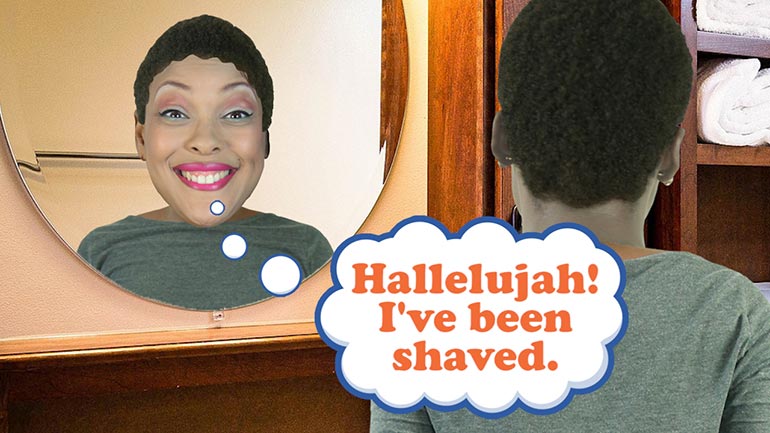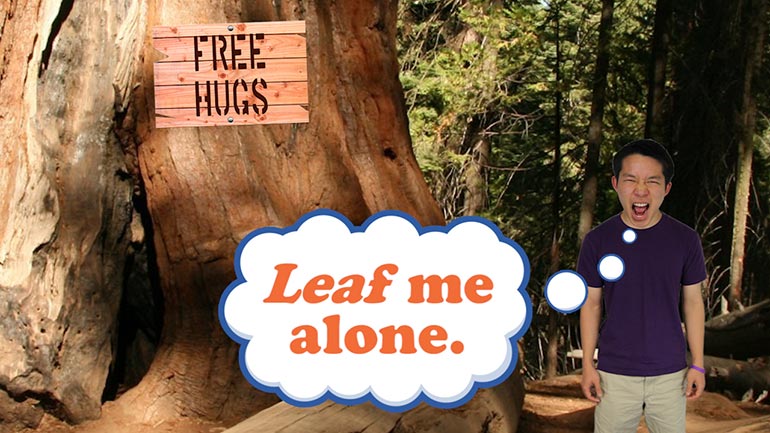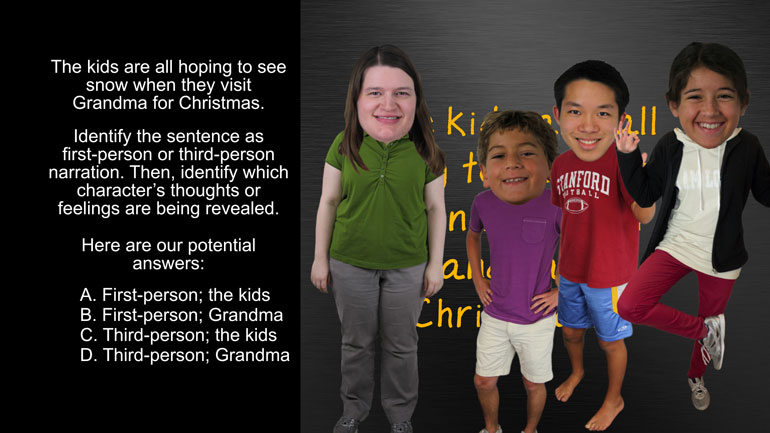ShmoopTube
Where Monty Python meets your 10th grade teacher.
Search Thousands of Shmoop Videos
ELA 4: Types of Biographies 277 Views
Share It!
Description:
Today we'll learn about biographies and autobiographies. And no, the second one has nothing to do with the lives of cars.
Transcript
- 00:04
[Coop and Dino singing]
- 00:13
It’s usually pretty easy to get to know people. You can look at their Facebook… [Person checking facebook profile]
- 00:16
or their Twitter… or their Instagram…
- 00:18
Or, if you’re not super into cyber-stalking, you can ask them questions about themself.
- 00:24
But what if you want to get to know somebody who isn't easy to access? Well, Shmoopers,
Full Transcript
- 00:28
that’s what biographies are for. Biographies are a type of writing that help [Coop explaining what biographies are]
- 00:32
blend together facts and descriptive writing. This helps the reader remains interested and
- 00:36
entertained while they learn!
- 00:37
Learning and fun – our two favorite things here at Shmoop.
- 00:40
…That wasn’t a joke, guys, that’s really what we’re all about.
- 00:43
Well…that and the hokey-pokey. It really is what it's all about. [Girl performing hokey-pokey]
- 00:46
Anyway, biographies come in two styles.
- 00:49
There's the plain old biography, where an author chooses an interesting person and writes [Dino discussing biography types]
- 00:52
about their life...
- 00:53
…then there's the autobiography, where people write about themselves.
- 00:57
That's right, you can write your own biography. Pretty cool, right? But you have to stick
- 01:01
to the facts. No writing that you went to outer space when you were six. [Astronaut bouncing on the moon]
- 01:05
Unless you did… In which case, we bow down to you.
- 01:08
But whether you're writing a biography about someone else or an autobiography about yourself,
- 01:13
you need to be sharp, witty, and have some pretty strong writing skills to boot. [Girl flexing her arms]
- 01:18
And why is that? Well, because biographies are about facts. And sometimes, writing fact
- 01:23
after fact can get a little boring for the reader – so it's up to the writer to use [Person writing with a pencil]
- 01:27
interesting words and engaging language to keep things interesting.
- 01:30
That's the difference between, "Chuck farted in class one day. His classmates didn't like
- 01:35
it. Chuck was embarrassed," and "one dismal and grey November day, Chuck let out a silent
- 01:41
but deadly toxic gas…from his butt. While his classmates desperately fanned the foul
- 01:46
fumes away, Chuck was busy turning redder than a tomato."
- 01:50
See? Using strong adjectives, synonyms, and the occasional simile or metaphor will go [Dino explaining biography techniques]
- 01:56
a long way.
- 01:56
It’s basically like when you do everything you can to snazzify your school uniform. So
- 02:00
add scarves and barrettes and cool shoes galore, and get writing!
- 02:03
…Just…use actual words. Sorry. We should've specified that. [Girl searching for clothing on computer]
Up Next
Sticks and stones, right? Well...only sometimes. It's a good idea to make sure your words aren't going to hurt others. Let's look at some ways to d...
Related Videos
Learn to debate like a champ. It's way better than debating like a chimp. That just takes mudslinging to a whole new level.
In this lesson we'll subject you to some verbs and predicates. Each one is a necessary part of a complete breakfas—er...sentence.
Choosing words carefully is important. You may end up vexing the assemblage of citizens you're conversing with...or you might even just plain bore...
ELA Drills, Beginner: Point of View 2. Identify what sort of narration is being used and which character's thoughts or feelings are being revealed.




